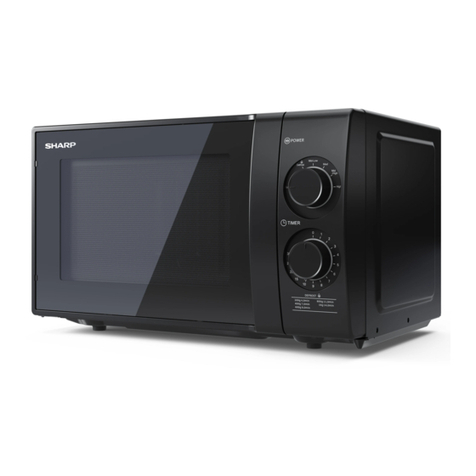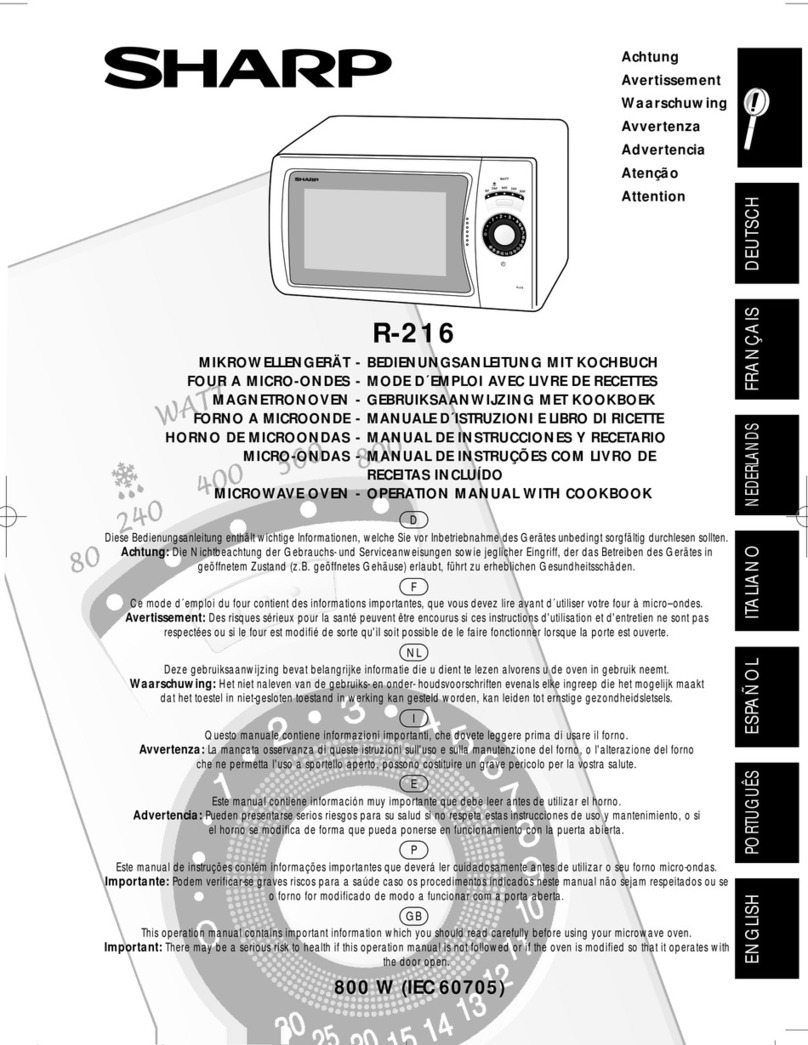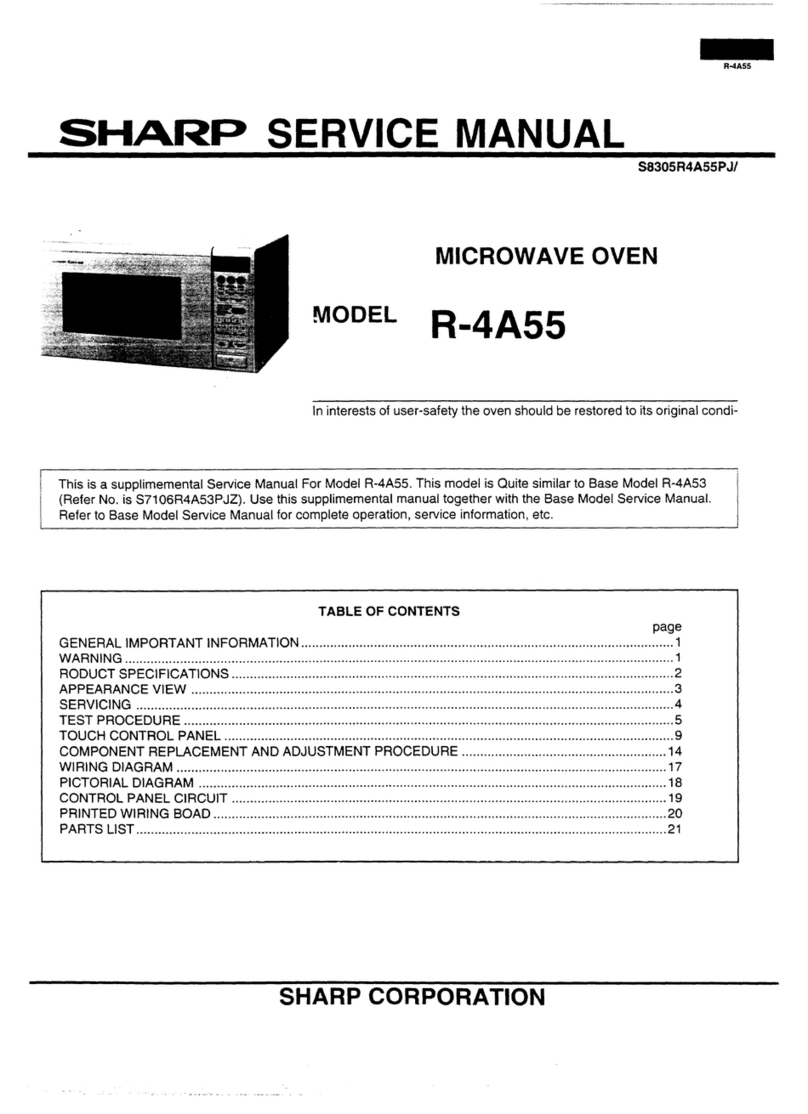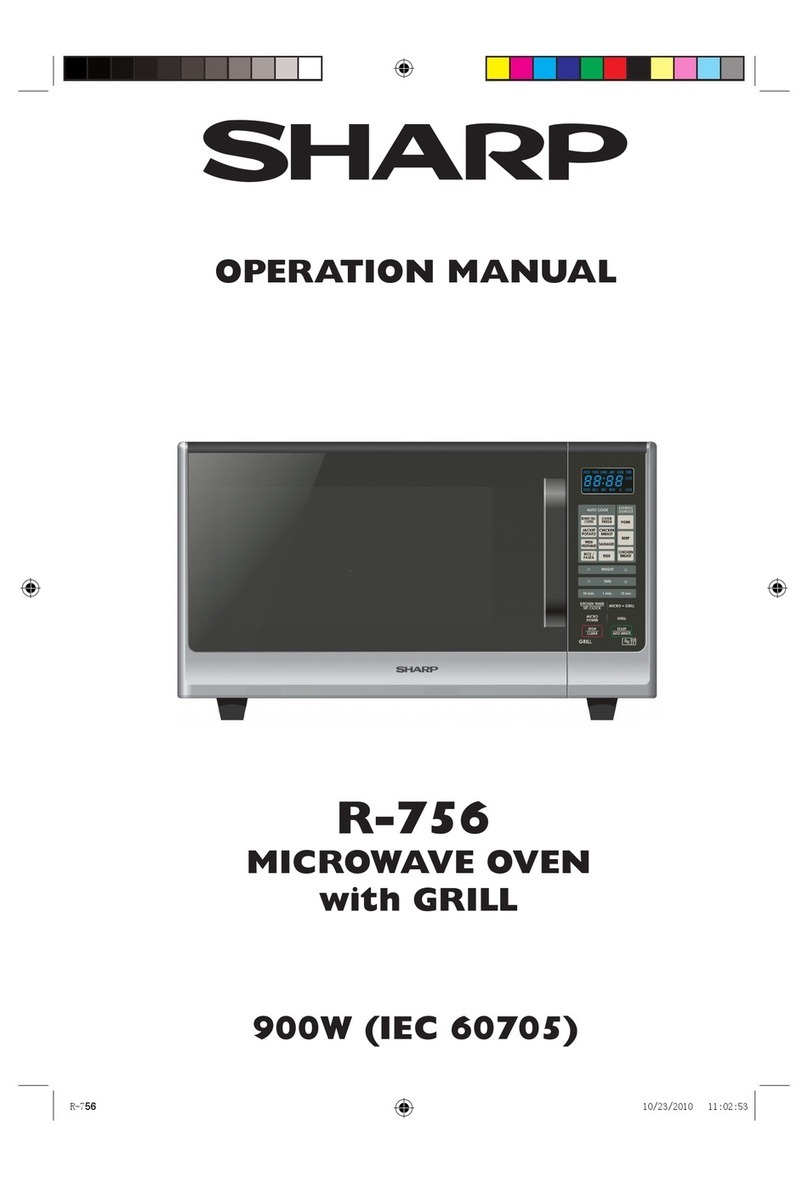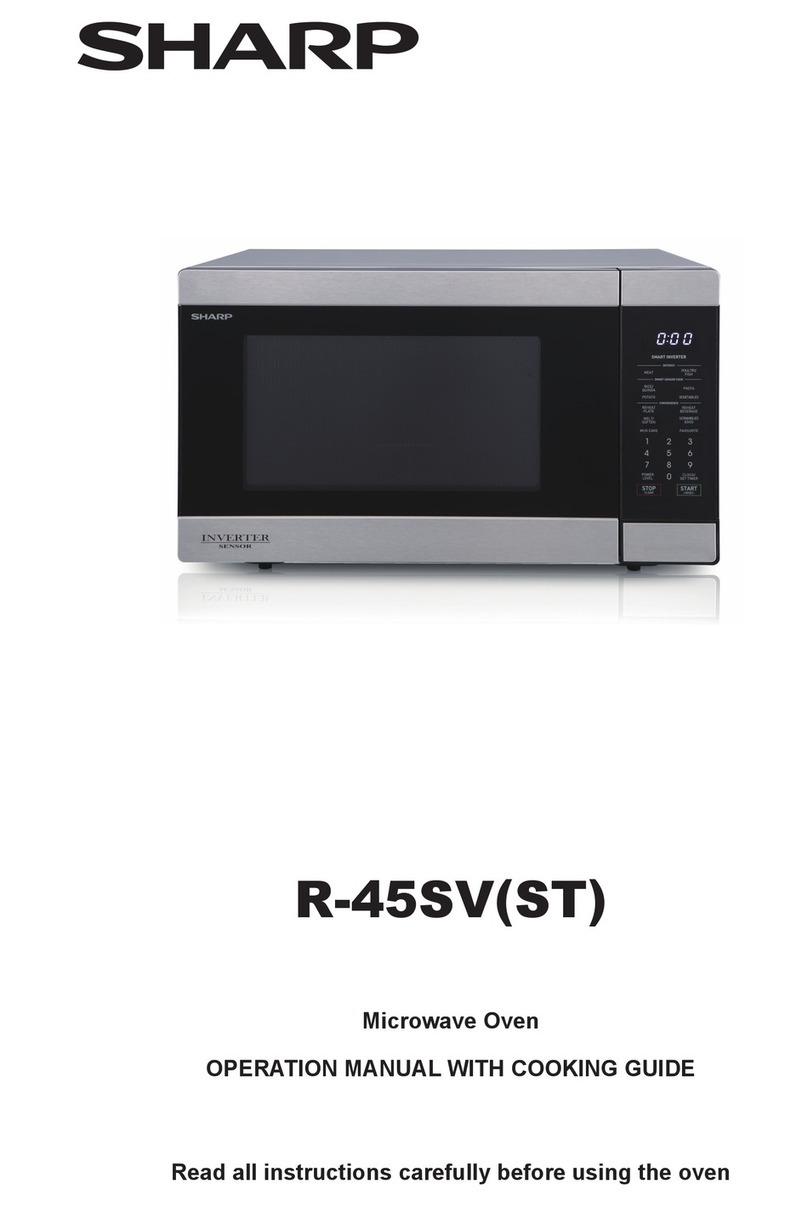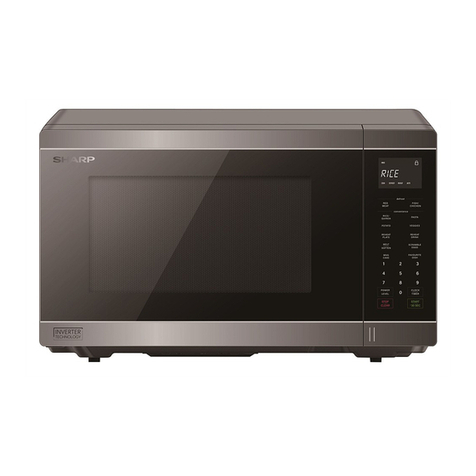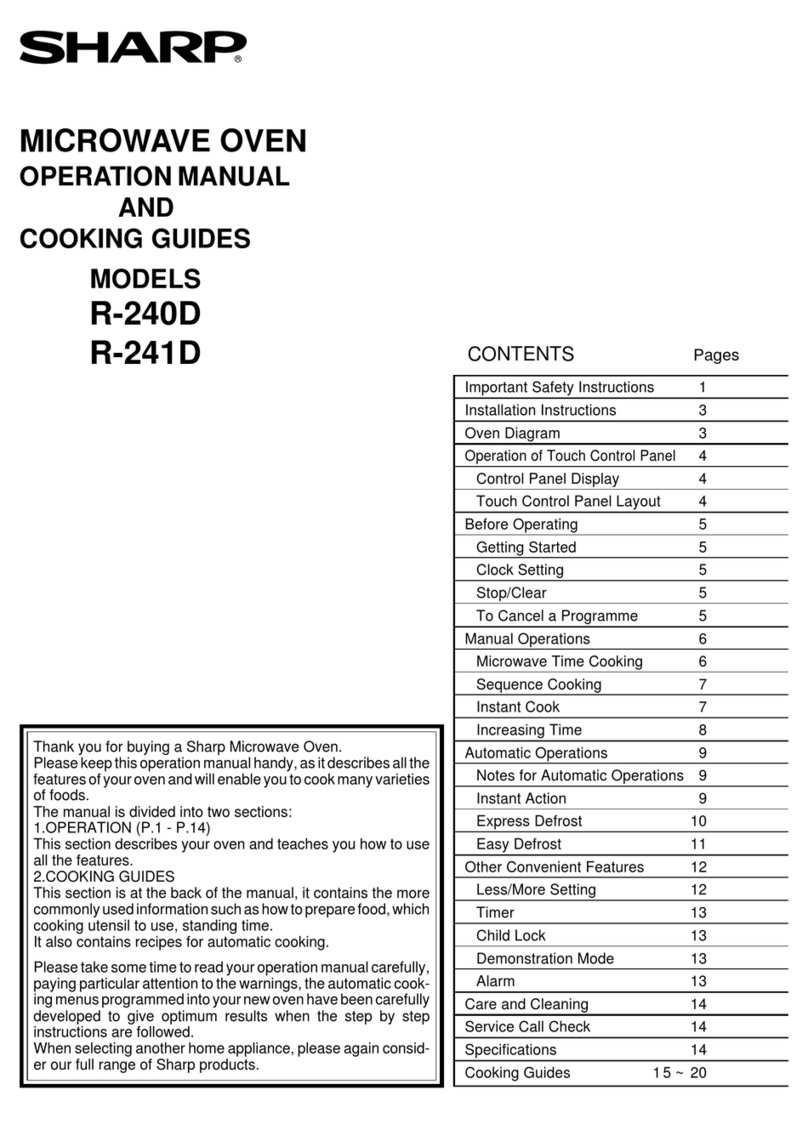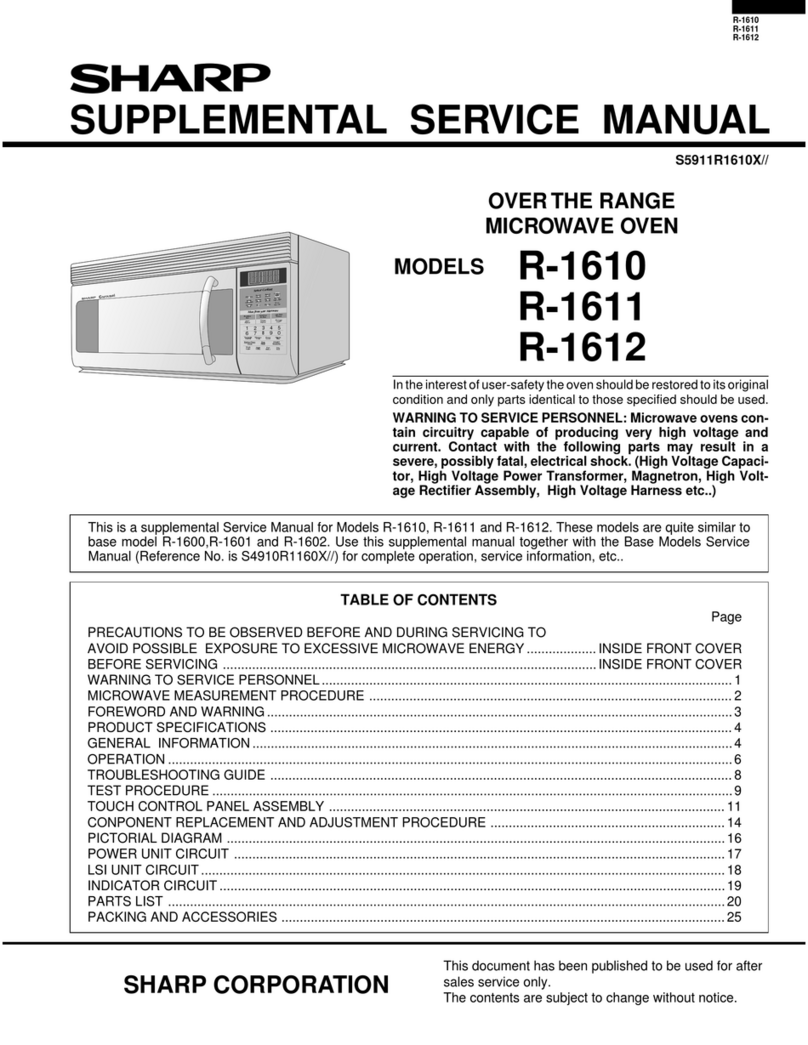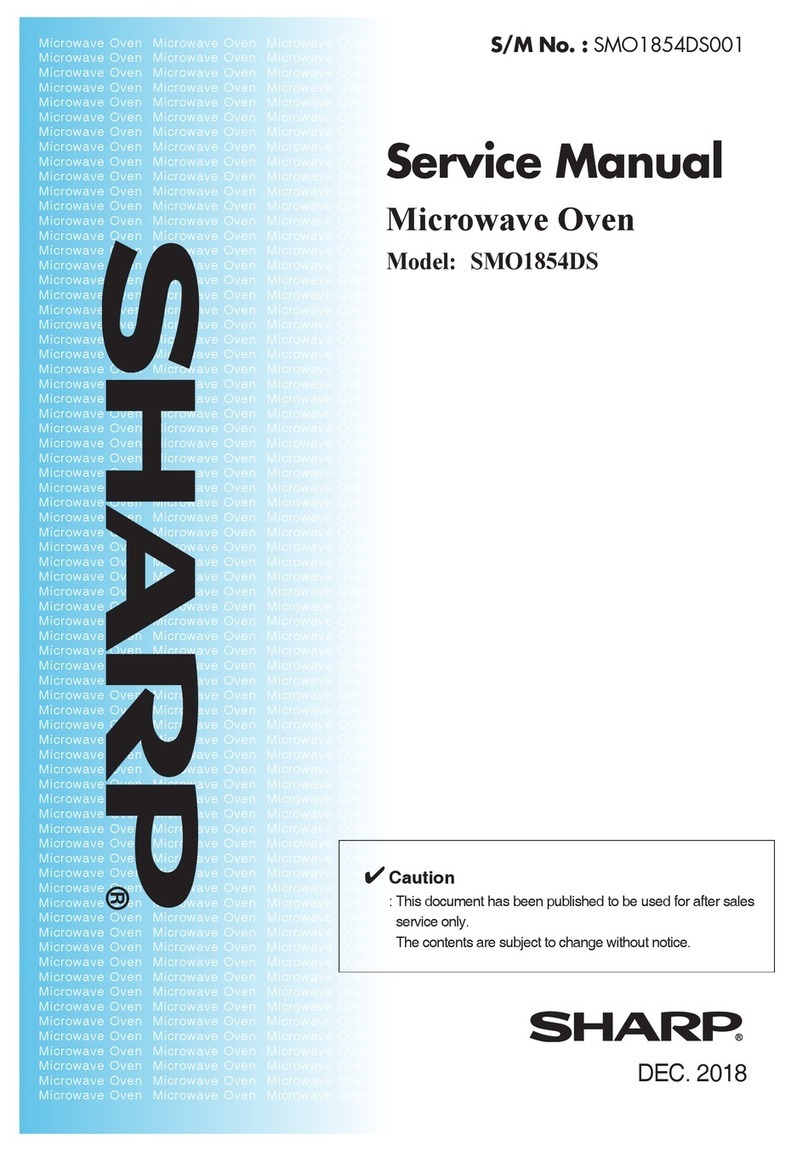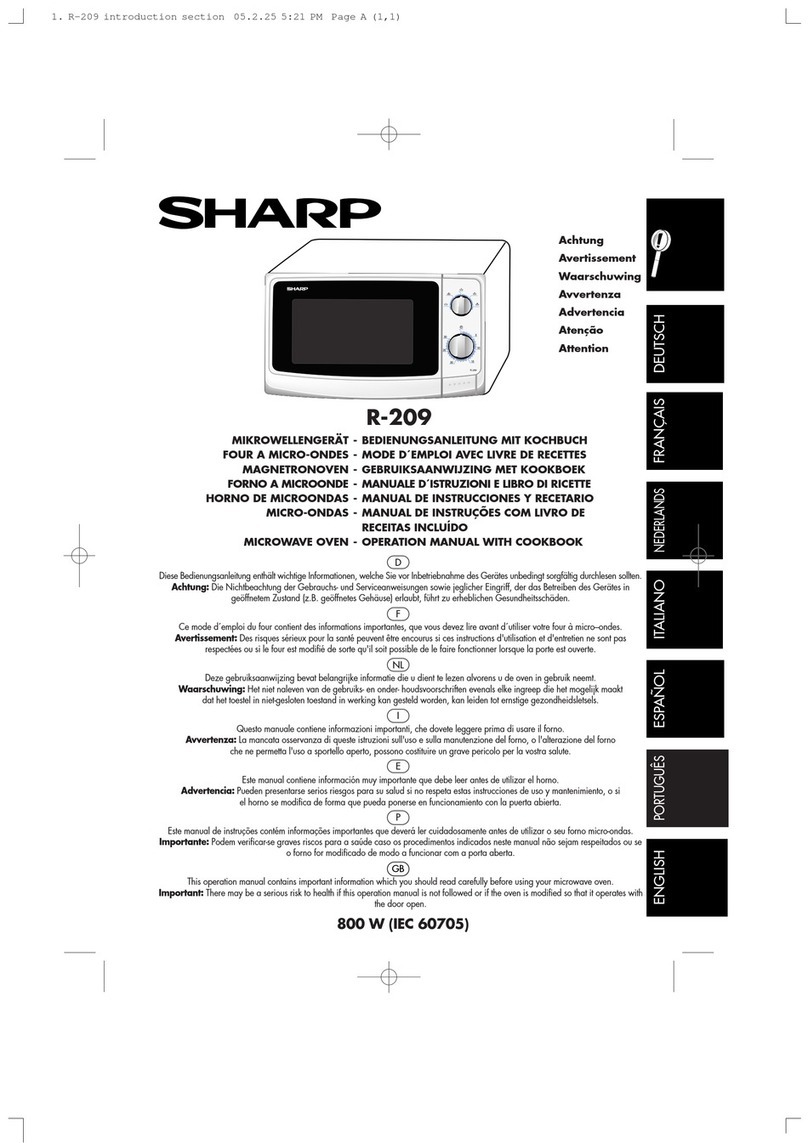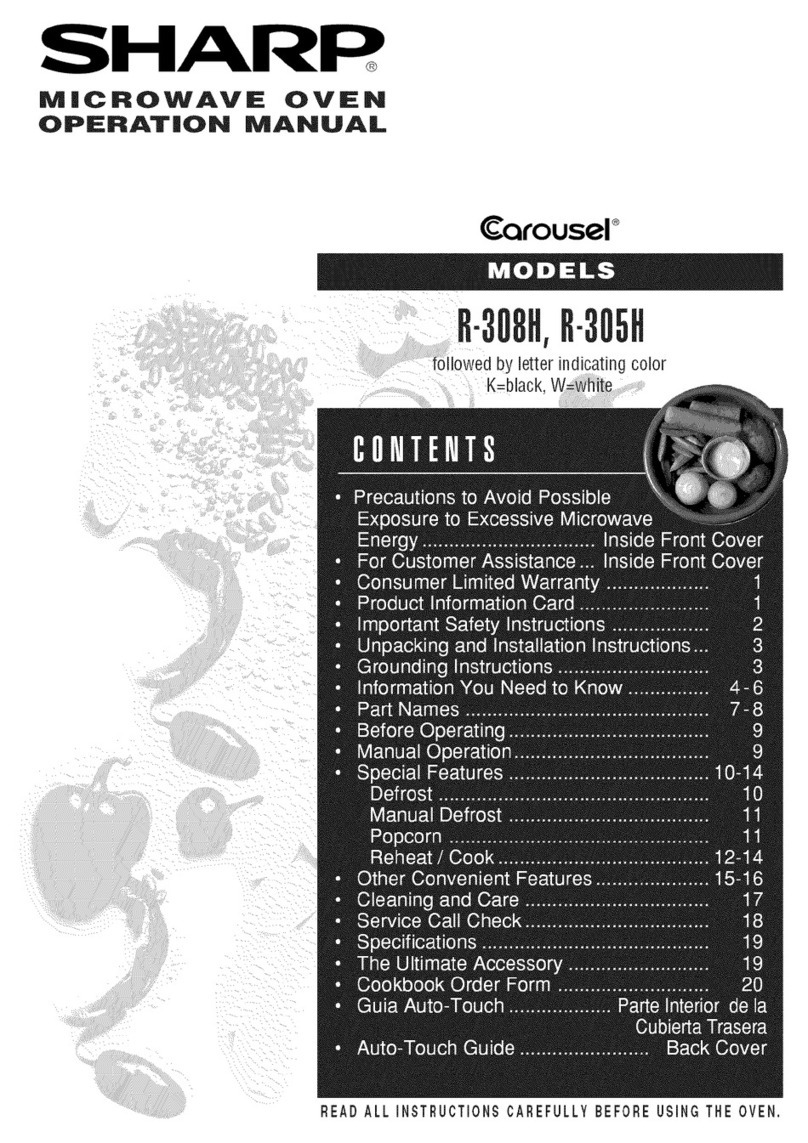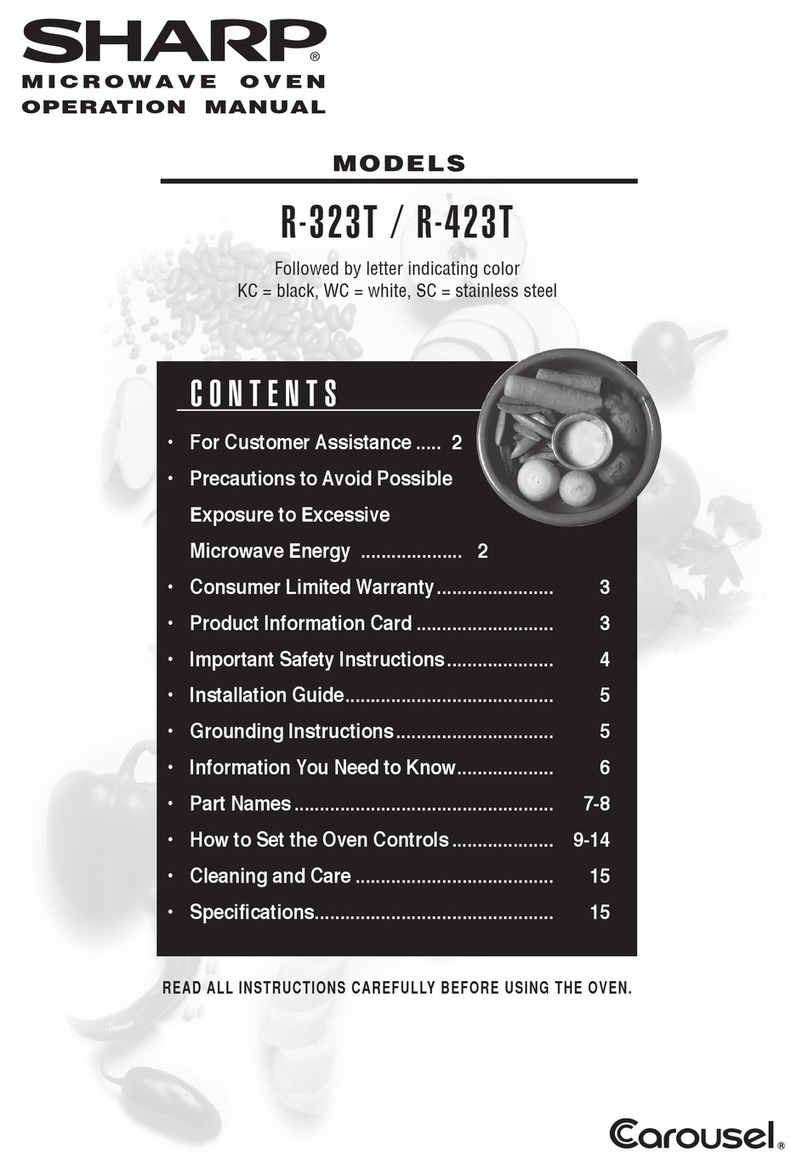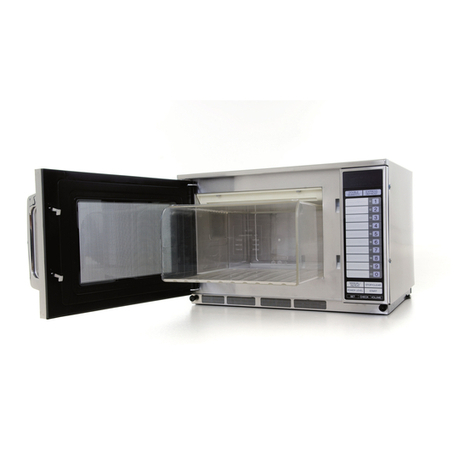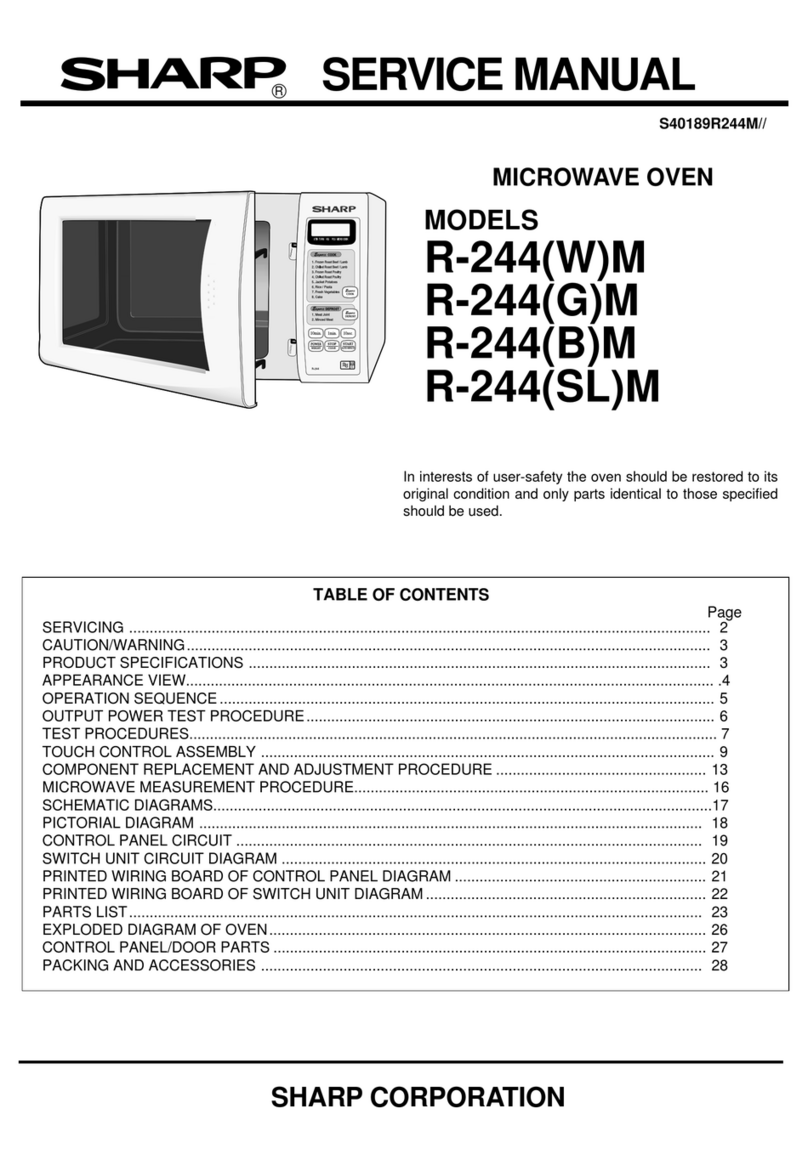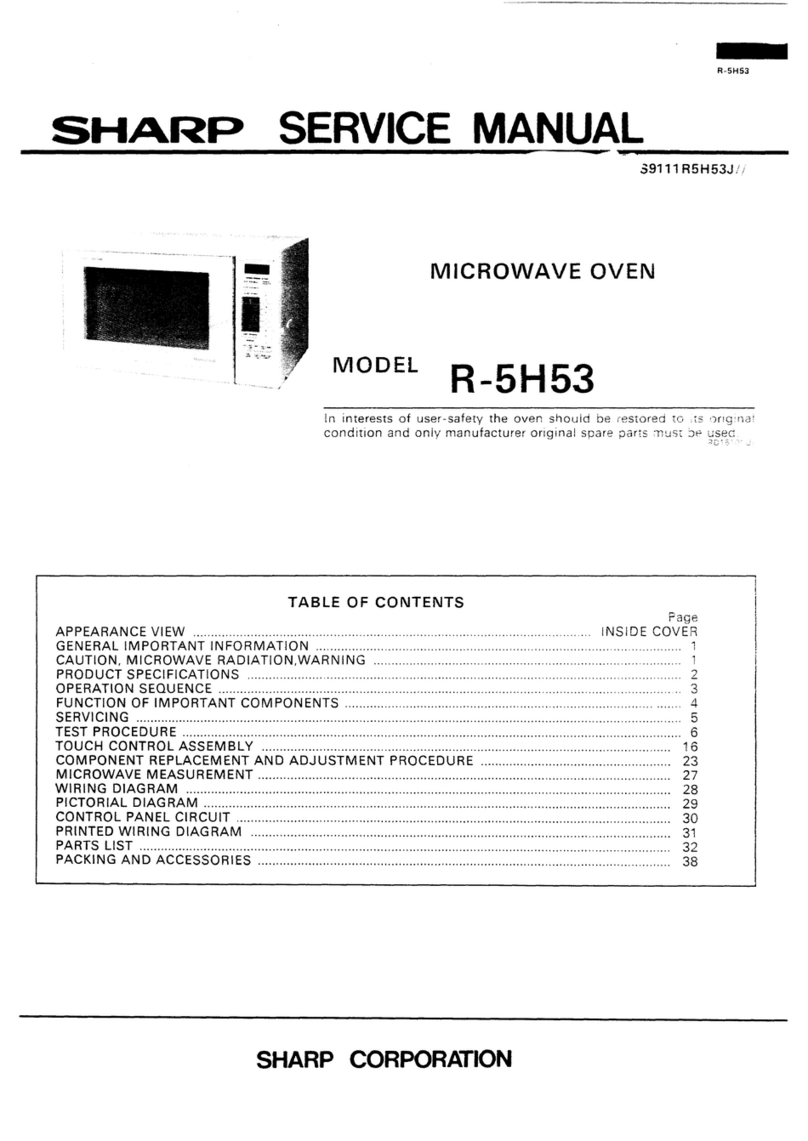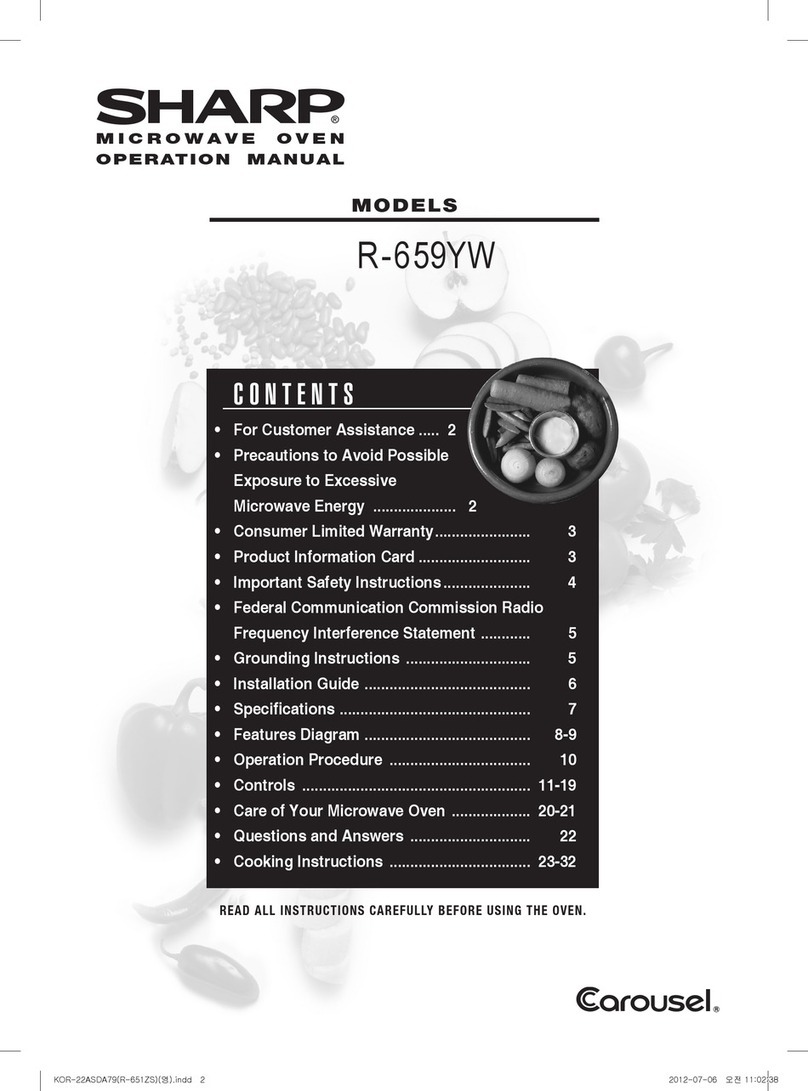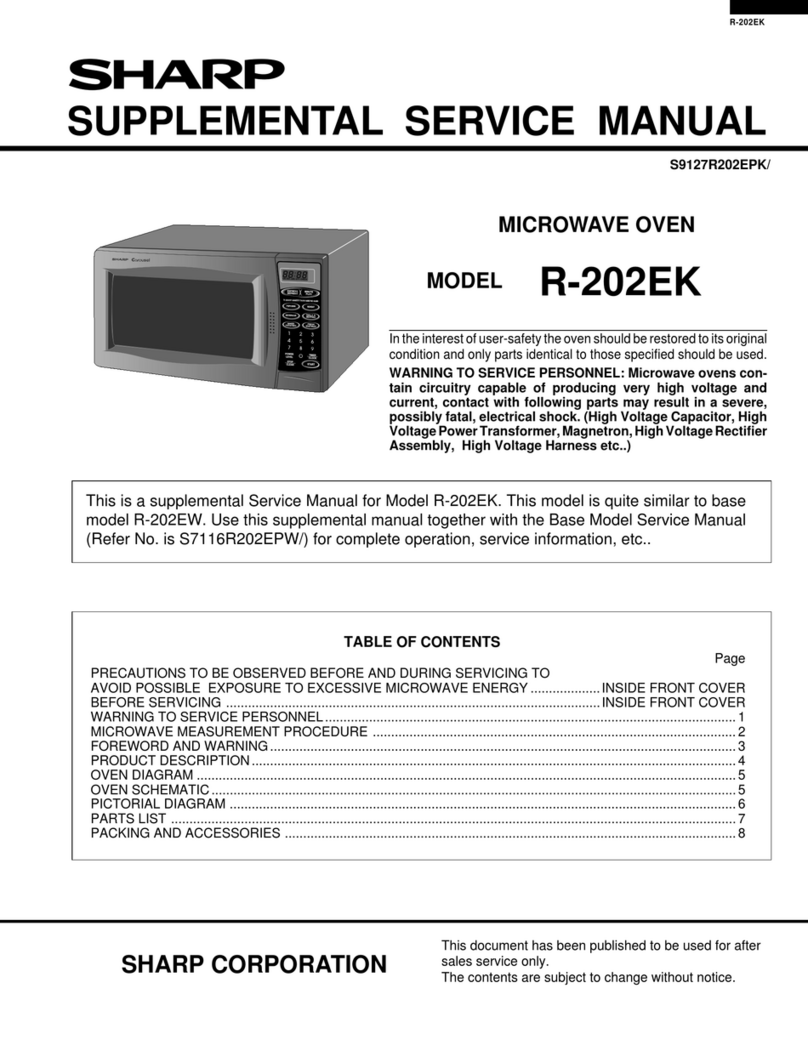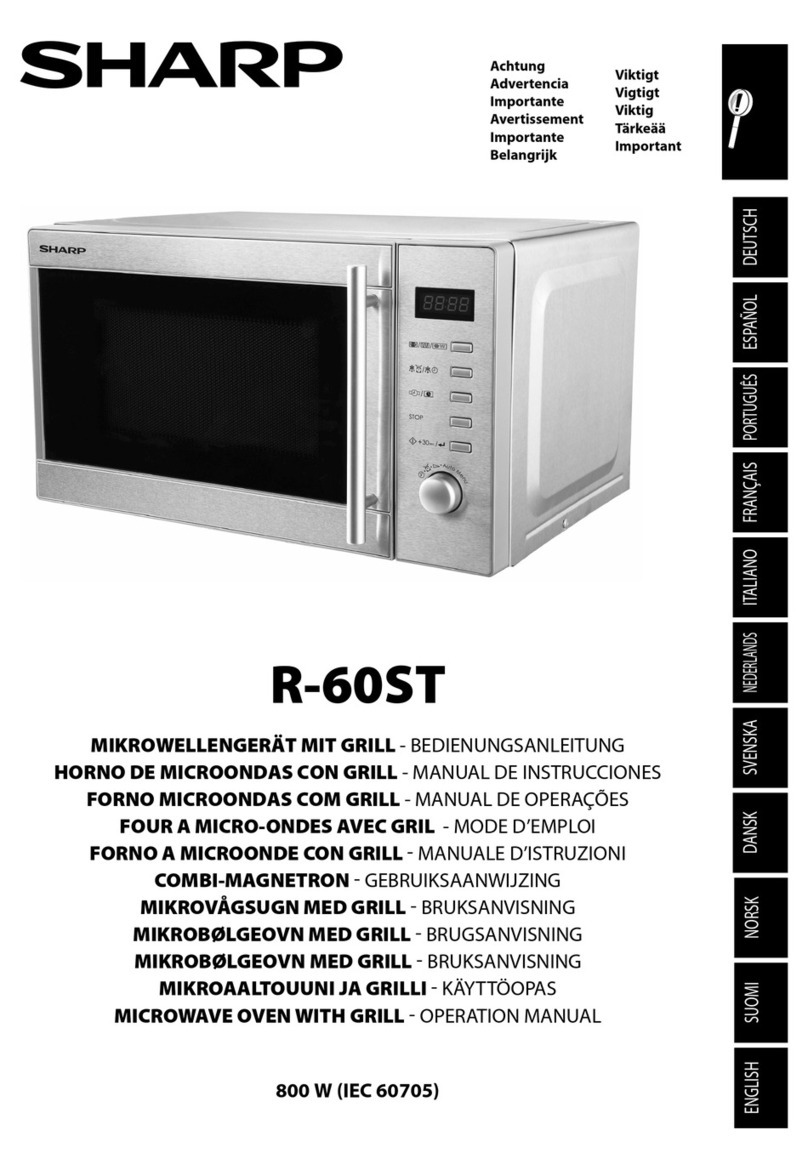MEDIUM HIGH, MEDIUM, MEDIUM LOW, LOW
COOKING
When the microwave oven is preset for variable cooking power,
rated voltage is supplied to the high voltage transformer inter-
mittently within a 32 second time base through the relay contact
which is coupled with the current-limiting relay (RY2). The fol-
lowing levels of microwave power are given.
SETTING;
NOTE: The ON/OFF time ratio does not exactly correspond
to the percentage of microwave power, because ap-
prox. 3 seconds are needed for heating up the mag-
netron lament.
POWER OUTPUT REDUCTION
After 100% power cooking mode is carried out for more than
20 minutes, the power out-put is automatically reduced to 70%.
Even if the cooking time is shorter than for 20 minutes, the
power output is reduced to 70% after total cooking time over 20
minutes when the oven is started in 100% power cooking mode
again within 1 minute and 35 seconds.
DOOR OPEN MECHANISM
The door is opened by pulling the door, refer to the Figure D-1.
Figure D-1. Door Open Mechanism
1ST. LATCH SWITCH AND 2ND. INTER-
LOCK RELAY CONTROL SWITCH
When the oven door is closed, the contacts (COM-NO) must1. be closed.
When the oven door is opened, the contacts (COM-NO)2. must be opened.
MONITOR SWITCH
When the oven door is closed, the contacts (COM-NC) must1. be opened.
When the oven door is opened, the contacts (COM-NC)2. must be closed.
If the oven door is opened and the contacts (COM-NO) of3.
the 1st latch switch, the relay (RY1) and the 2nd. interlock
relay (RY2) fail to open, the fuse T6.3A blows simultaneous-
ly with closing the contacts (COM-NC) of the monitor switch.
CAUTION: BEFORE REPLACING A FUSE T6.3A TEST THE
1ST. LATCH SWITCH, RELAY (RY1) AND 2ND. IN-
TERLOCK RELAY (RY2) AND MONITOR SWITCH
FOR PROPER OPERATION. (REFER TO CHAP-
TER "TEST PROCEDURE".)
FUNCTION OF IMPORTANT COMPONENTS
FUSE T6.3A
The fuse T6.3A blows when the contacts (COM-NO) of the 11.
st. latch switch, the relay (RY1) and the 2nd. interlock relay
(RY2) remain closed with the oven door open and when the
monitor switch closes.
If the wire harness or electrical components are short-2.
circuited, the fuse T6.3A blows to prevent an electric shock
of re hazard.
HIGH VOLTAGE FUSE
The high voltage fuse blows when the high voltage rectier or
the magnetron is shorted.
TEMPERATURE FUSE 150°C (OVEN)
The temperature fuse located on the top of the oven cavity is
designed to prevent damage to the oven if the foods in the oven
catch fire due to over heating produced by improper setting
of cook time or failure of control unit. Under normal operation,
the temperature fuse remains closed. However, when abnor-
mally high temperatures are reached within the oven cavity, the
temperature fuse will open at 150°C, causing the oven to shut
down. The defective temperature fuse must be replaced with a
new one.
TURNTABLE MOTOR
The turntable motor drives the turntable roller assembly to ro-
tate the turntable.
FAN MOTOR
The fan motor drives a blade which draws external cool air. This
cool air is directed through the air vanes surrounding the mag-
netron and cools the magnetron. This air is channelled through
the oven cavity to remove steam and vapours given off from the
heating foods. It is then exhausted through the exhausting air
vents at the oven cavity.
NOISE FILTER
The noise filter prevents the radio frequency interference that
might ow back in the power circuit.
